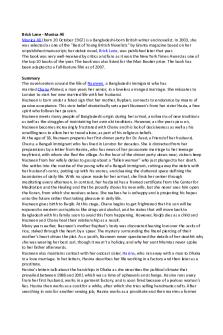Brick TEST (compressive&absorption) PDF

| Title | Brick TEST (compressive&absorption) |
|---|---|
| Author | Alyaa Amani |
| Course | Civil engineering |
| Institution | Universiti Tun Hussein Onn Malaysia |
| Pages | 16 |
| File Size | 202 KB |
| File Type | |
| Total Downloads | 365 |
| Total Views | 411 |
Summary
TABLE OF CONTENTS i ABSTRACT NO. TITLE PAGE 1 INTRODUCTION 1 OBJECTIVES 1 LABORATORY SCOPE 1 SIGNIFICANCES OF LABORATORY TESTING 2 LITERATURE REVIEWS 6- 3 METHODOLOGY 8- 4 DATA ANALYSIS 10- 5 DISCUSSION 6 CONCLUSIONS 7 REFERENCES ABSTRACTBrick plays very important role in the field of civil engineer...
Description
TABLE OF CONTENTS NO. i 1.0 1.1 1.2 1.3 2.0 3.0 4.0 5.0 6.0 7.0
TITLE ABSTRACT INTRODUCTION OBJECTIVES LABORATORY SCOPE SIGNIFICANCES OF LABORATORY TESTING LITERATURE REVIEWS METHODOLOGY DATA ANALYSIS DISCUSSION CONCLUSIONS REFERENCES
PAGE 2 3 3 4 5 6-7 8-9 10-12 13 14 15
1
ABSTRACT
Brick plays very important role in the field of civil engineering construction. Bricks are used as an alternative of stones in construction purpose. Bricks are rectangular units of construction material. Bricks are used in masonry construction, walls, and pavements. It is used as a substitute of stone, where the stone is not readily available. Brick chips are often used as coarse aggregate in the concrete mix. The brick must have to be made sure that it is in a good condotion as it is choosed before making a building. Some test is required to perform on the brick. The first test that needed to apply on the brick is compressive strength test. It is applied to determine the maximum load that the brick can resist while it experiencing a compressive load until the deformation of the brick is changed. A compression testing machine is used to put the load. The value of the maximum load is directly propotional to compressive strength of the brick. Secondly, water absoption test is applied to determine the workability of the brick. This test is perform to check the amount of water that the brick absorb. When the weight of the brick increases, it show that it absorp water. To perform this test, the brick is immerse in a celan water for certain amount of time. A good brick should absorb less than 10% of water. The discussion is made after the result of both test is obtained and recorded in tables. The next step is followed by conclusion based on the discussion. There are a few things that we can learn and observe from these experiments and get the ideas on how to improve in the test to get the best result.
2
1.0 INTRODUCTION
There are a few types of bricks such as common burnt clay brick, sand lime brick, engineering brick, concrete brick and fly ash clay brick. Bricks can be of many types depending on its quality, building process, manufacturing method, raw material, using location, weather-resisting capability, purpose of using,shape and region.Brick is a small rectengular block and typically made of fired or sun-dried and commonly used in any construction such as pavements, walls and other elements of masonry construction. Silica (Sand) and Alumina (Clay), these two are the most prominent ingredients in brick clay. When mixed with water in proper proportions, it gains plasticity. The plastic mass can be easily molded and dried. It should not go through cracking, shrinkage or warping.There are some main uses of construction brick which are for construction of walls of any size, floors, arches and cornices and brick retaining wall. There are three experiments that have to be carried out to obtain the wanted result which are its density, water absorption and compressive strength. The density of the brick can be obtain from its mass and dimension or volume.
1.1 OBJECTIVES 1. To indicate the weight of the brickwork. 2. To determine the workability of the brick. 3. To determine the maximum amount of strength the brick can resist.
3
1.2 LABORATORY SCOPE
The first test were carried out by our group was density test. Basically density is the degree of compactness of a substance. It is will know for its famous formula which is p=m/v (kg/m3).Mass is divided by volume. The density of a material varies with temperature and pressure. Density is an intensive property in that increasing the amount of a substance does not increase it intensity, rather it increase its mass. This theory was first invented by the will known Archimedes. He knew that the irregularly shaped wreath could be crushed into the cube whose volume could be calculated easily and could be compared with mass. The next test is water absorption test for brick.The strength of the brick depends on its water absorption capacity. The water absorption of brick is ude to the presence of voids in the bricks. If the brick has more voids, it will absorb more water and reduces the load carrying capacity. Hence, the bricks are tested to determine their water absorption capacity before using them in construction work. Water absorption can be calculated by the specified formula which is : Percent water absorption= {(wet weight- dry weight)/ dry weight} x 100. Every brick is weighed and the water absorption is recorded in the specified table. Compressive strength of brick is determined by testing the brick under standard conditions using a compression testing machine. The compressive is determined by placing brick in compression testing machine. After placing the brick in comoression testing machine, apply load on it until brick breaks. Note down the value of failure load and find out crushing strength value or maximum value of load that the brick can resist. The compressive strength of every brick can be determined by using spedified formula:Compressive strength of bricks= Maximum load at failure/ Average area of bed face
4
1.3 SIGNIFICANCES OF LABORATORY TESTING Brick density is an important parameter. Density indicates the weight of the brickwork. Cores, Cells, and Frogs decrease the density and in turn, decrease the material cost.While fire clay bricks have a density of 2400 kg/m3, for common red bricks it is 1900 kg/m3 .Apart from material density, brick density can be measured directly. The mass and volume of an oven-dried brick are measured. The bulk density can be determined by dividing the mass by volume. Water absorption test on bricks are conducted to determine durability property of bricks such as degree of burning, quality and behavior of bricks in weathering. The water absorption by bricks increase with increase in pores. So, the bricks, which have water absorption less than 3 percents can be called as vitrified. It is necessary to know the Compressive strength of brick before using them in any construction work. When bricks are used in any structure, say buildings, the bottom most layer of the brick will be subjected to highest compressive stress. So it is important to know that any particular brick will be able to withstand that load or not.
5
2.0 LITERATURE REVIEWS
Various types of tests on bricks are conducted to check the qualities of bricks for construction purposes. Tests on bricks are conducted at construction site as well as in laboratory. Bricks are oldest and important construction materials because of their durability, reliability, strength and low cost. To produce good quality of structure, good quality materials are required. To decide the quality of the materials some tests are to be conducted on bricks. The tests which are required to find the suitability of bricks for construction purposes are the density, absorption test and compressive strength test. Bricks are classified into first class, second class and third class. First class bricks are red deep in colour and the texture is smooth and the surface is smooth and rectangular. First class bricks should be free from cracks and stone. While second class bricks also red deep in colour and surface is smooth but there will be small cracks and the crushing strength should be not less than 7 N/mm2. Next, third class brick are under burnt. They are soft and bright in colour that produce dull sound when it strikes each other. As there are many units of mass and volume covering many different magnitudes there are a large number of units for mass density in use. In industry, other large or smaller units of mass and volume are often does not increase its density. In this case, the density that we have to calculate is the density of every tested brick. The bricks were first weighed and its volume is calculated. It is a simple calculation to get the density as the data can be easily acquired. The result of each density is recorded in table. The weight of a quantity of water absorbed to weight of brick expressed as a percentage is the water absorption capacity of a brick. The strength of brick depends upon its water absorption capacity. If the brick has more voids it has more chance to absorb more water reducing the load carrying capacity. The difference between dry and wet brick weights will give the amount of water absorption. For a good quality brick the amount of water absorption should not exceed 20% of weight of dry brick.
6
Crushing strength of bricks is determined by placing brick in compression testing machine. After placing the brick in compression testing machine, apply load on it until brick breaks. Note down the value of failure load and find out the crushing strength value of brick. Minimum crushing strength of brick is 3.50N/mm2.if it is less than 3.50 N/mm2, then it is not useful for construction purpose.
7
3.1 METHODOLOGY
Task dividing
Briefing
Data Collection Procedure
Discussion
3.2 Water Absorption for Brick 3.2.1 Equipment Scale weight Curing tank Stop watch 3.2.2 Material Clean water Bricks 3.2.3 Procedure 1. Two bricks are taken and weighed it by using scale weight 2. Clean water is made sure in the curing tank 3. The bricks is put in the curing tank for 30 minutes. The time is recorded using stopwatch. 4. The brick is taken out after 30 minutes and weighed by using scale weight. 5. The weight is recorded and water absorption is calculated.
8
3.3 Compressive strength of Bricks 3.3.1 Equipment Scale weight Compressions testing machine Ruler 3.3.2 Material
Bricks
3.3.3 Procedure 1. The brick is taken to be measured the length by using ruler and weighed by using scale weight. 2. The brick is placed into testing machine. 3. The brick is placed correctly on the machine plate. The specimen is carefully aligned with the spherically seated plate. 4. The load is applied to the brick axially. 5. The load is slowly applied at the rate of 150kg/cm2 per minute until the brick breaked. 6. The maximum load at which the specimen breaks is taken as a compressive load. 7. Data is recorded.
9
4.0 DATA ANALYSIS
4.1 Density of bricks
RESULT Test/ Brick Volume of brick, m3
Mass of brick, kg
Density, kg/m3
Average density
A 0.099x0.068x0.211=
B 0.097x0.07x0.212=
1.4205x10-3
1.4395x10-3
2.74
2.58
2.74/1.4205x10-3=
2.58/1.4395x10-3=
1928.90
1792.29 1860.60
ANALYSIS OF DATA The result shown that there are significant differences between brick A and brick B. The mass of brick A is more than brick B. The mass will affect the density.
10
4.2 Compressive strength Brick Sample Mass of brick ,kg Area of brick, m2
A 2.74 0.211x0.099=
B 2.58 0.212x0.097=
Volume of brick Density , kg/m3
0.0208 1.4205x10-3 1928.90
0.0206 1.4395x10-3 1792.29
624.8
348.4
624.8/0.0208=
348.4/0.0206=
Maximum value of load, kN Value of compressive strength, kN/m2 Average compressive
30038.46
16912.62 23475.54
strength, kN/m2 ANALYSIS OF DATA Theoretically, the brick is supposed to resist more load if it is denser, so the result obtained showed that the experiment is success. The value of maximum load resisted by the brick is directly proportional to compressive strength of the brick.
11
4.3 Water Absorption Brick Sample Volume, m3 Density, kg/m3 Dried mass, kg Mass after immersed, kg Percentage of water absorption, %
A 1.3304x10-3 1849.07 2.46 2.70
B 1.3631x10-3 1966.16 2.68 2.96
2.70 −2.46 ×100=¿ 2.46
2.96 −2.68 ×100=¿ 2.68
9.76
10.45
Average percentage
10.11
of water absorption, % ANALYSIS OF DATA Percentage of water absorption, % =
mass of wet brick−mass of dried brick ×100 % mass of dried brick
Mass of brick increased compare to its original mass after being immersed. The formula above is used. According to theory, the absorption of water thought to be less than 10%. In experiment, we to obtained reading of 10.11%. As a result, our experiment did not match the theory. According to the theory, the mass of dried brick supposed to be inversely proportional to density of brick. The percentage of water absorption for the brick should be lower when the mass of brick is bigger. The higher dense of brick indicates that the brick structure is more compact and amount of water should be lesser absorbed. The workability of the bricks is failed.
12
5.0 DISCUSSION
Vernier calliper should be used in order to obtain accurate reading of height, width and length of bricks. Zero error of vernier calliper to be eliminated before it is used for measurement. Vernier calliper should be perpendicular to the object which to be tested so that correct and accurate reading could be obtained. Different brick will have a different number of density. The density of a brick is depends on its mass and volume. The higher the mass, the higher the density. Otherwise, the higher the volume of the brick, the lower its density. The mass of brick is directly proportional to the density of brick while the volume of brick is inversely proportional to the density of brick. Brick which is tested for compressive strength was succeed. The surface of the brick is even, thus even distribution of compressive force caused it to crack on average load. The value of maximum load resisted by the brick is directly proportional to compressive strength of the brick. When the compressive machine is activated, student should stand a distance from the machine to avoid injury from flying debris. Lastly after testing, the surface of plate in the compressive strength machine tought to be cleaned and cleared of all debris so that it will not affect future testing. After being immersed in the water for 30 minutes, the brick should be taken out of the water and ensure the surface is dry before weighing it. The water in the curing tank are not be sured that it was cleaned and effected by the others substances in the water. Both bricks are also not wiped before being weight so the inaccurate reading of water absorption is obtained. A good brick should have sharp edges and angle. Brick A may absorb water less than 10% but brick B does not. High rate of water absorption may cause swelling of stabilized clay fraction and resulting in losing strength with time. The bricks did not show good workability.
13
6.0 CONCLUSION
Bricks were tested with water absorption test and compressive strength. From compressive strength of brick test, we succeed to prove the theory of which is the value of maximum load resisted by the brick is directly proportional to compressive strength of the brick. The water absorption test of brick shown that absorption of water of Brick A was less than 10% but brick B is more than 10%. This does not follow the theory which mass of dried brick is inversely proportional to density of brick. This situation may happen because of some mistake during the test occur. The handling of the bricks should be more careful to prevent any error. The water in the curing tank should me more cleaned. This shown that it is important to perform few test first before use the bricks for any construction works.This is to ensure the strength and durability of the construction so that is safe and any accidents can be avoided. Always remember to take precaution before perform any experiment.
14
7.0 REFERENCES 1. Sadanandam,(2016)Type of test on brick for building construction work. Retrieved from https://theconstructor.org/building/types-of-tests-on-bricks/12701/ 2. Monamy,(2019) Types of brick-Detail classification of brick. Retrieved from https://civiltoday.com/civil-engineering-materials/brick/191-types-of-bricks 3. Conservation Wiki (2018,21 October). Brick sizes. Retrieved from https://www.designingbuildings.co.uk/wiki/Brick_sizes 4. Amar(2019, 20 April).Brick test. Retrieved from https://www.scribd.com/document/406909581/Baru-Brick-Test-Final-Lab-Report
15
16...
Similar Free PDFs

Brick TEST (compressive&absorption)
- 16 Pages

Brick Masonry and types
- 13 Pages

Brick Work - Lecture notes 3
- 3 Pages
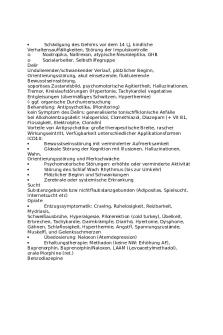
Test - test
- 1 Pages
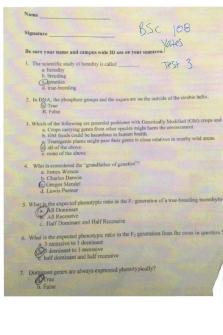
Yates Test 3 - Test
- 7 Pages
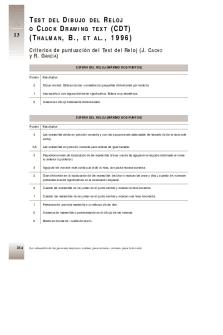
Test-reloj - test
- 4 Pages
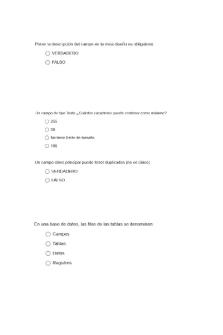
Test Access 2010 - Test
- 6 Pages
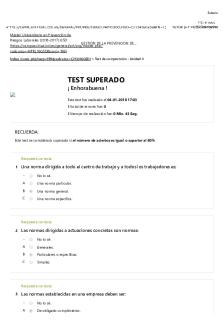
Resultado Test 842 - TEST
- 2 Pages
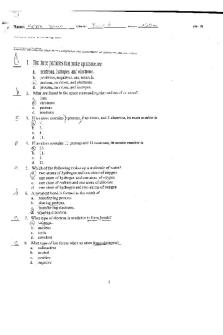
AP. Bio. Test - test
- 4 Pages
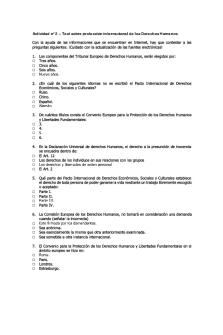
Test
- 4 Pages
Popular Institutions
- Tinajero National High School - Annex
- Politeknik Caltex Riau
- Yokohama City University
- SGT University
- University of Al-Qadisiyah
- Divine Word College of Vigan
- Techniek College Rotterdam
- Universidade de Santiago
- Universiti Teknologi MARA Cawangan Johor Kampus Pasir Gudang
- Poltekkes Kemenkes Yogyakarta
- Baguio City National High School
- Colegio san marcos
- preparatoria uno
- Centro de Bachillerato Tecnológico Industrial y de Servicios No. 107
- Dalian Maritime University
- Quang Trung Secondary School
- Colegio Tecnológico en Informática
- Corporación Regional de Educación Superior
- Grupo CEDVA
- Dar Al Uloom University
- Centro de Estudios Preuniversitarios de la Universidad Nacional de Ingeniería
- 上智大学
- Aakash International School, Nuna Majara
- San Felipe Neri Catholic School
- Kang Chiao International School - New Taipei City
- Misamis Occidental National High School
- Institución Educativa Escuela Normal Juan Ladrilleros
- Kolehiyo ng Pantukan
- Batanes State College
- Instituto Continental
- Sekolah Menengah Kejuruan Kesehatan Kaltara (Tarakan)
- Colegio de La Inmaculada Concepcion - Cebu




